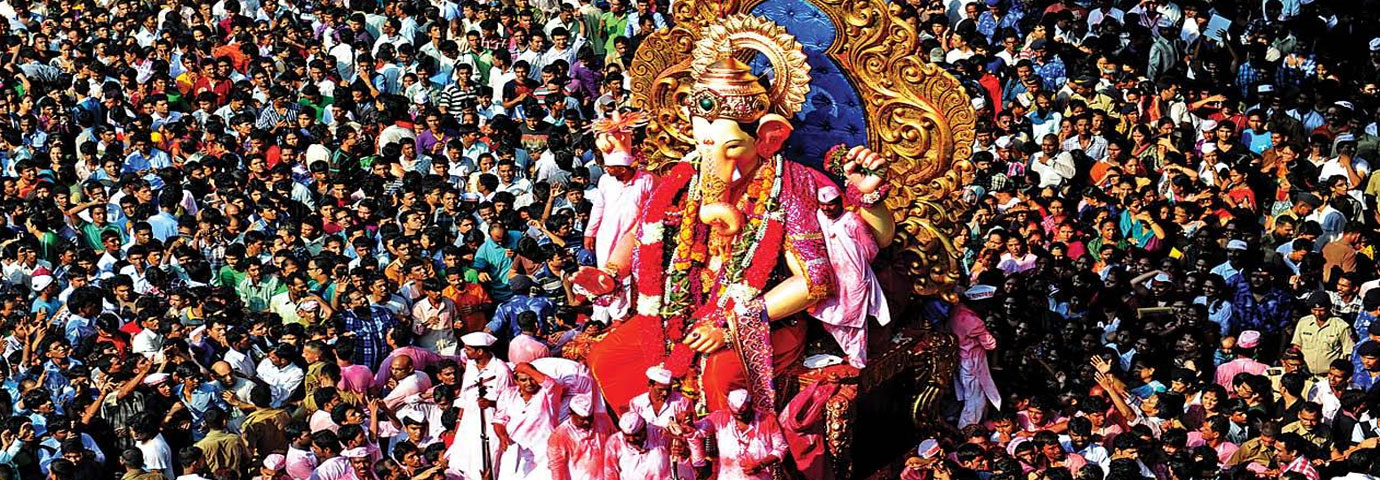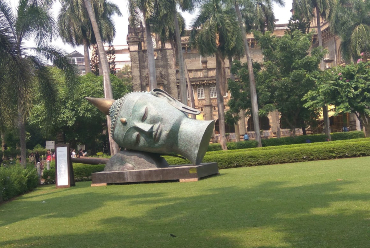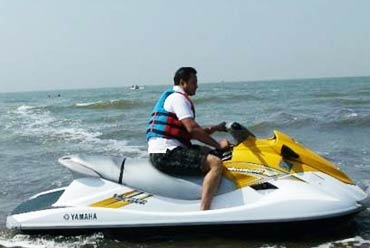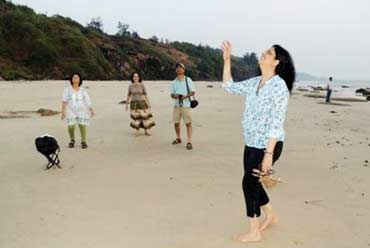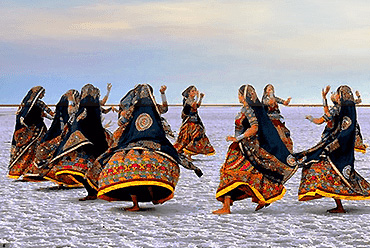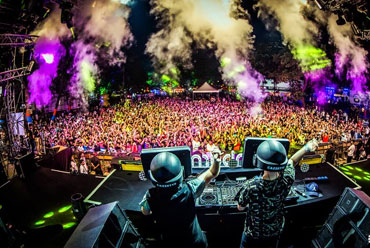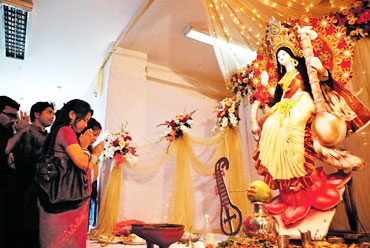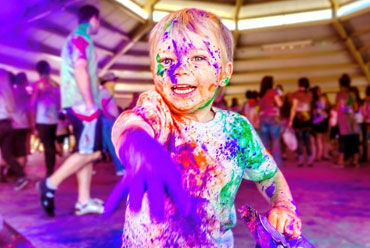Lord Ganesha, affectionately called Ganapati, is commonly depicted in homes and offices throughout India as a chubby, smiling and a little mischievous God. His devotees ascribe to Ganesha the ability to bestow wisdom and wealth upon us humans, thus making him probably the most popular deity in the Hindu pantheon. To repay Ganesha's bounty, in India, especially in Maharashtra and nearby areas, the entire population celebrates the ten-day festival of Lord Ganesha's birthday. In 2024, Ganesh Chaturthi is celebrated on Feb 12th.
The festival of Ganesh Chaturthi is celebrated all over India with great festivities and zest. It is celebrated as the birth anniversary of Lord Ganesha, the God of wisdom and prosperity. The festival honors Ganesha, the elephant-headed God of the Hindu pantheon. During the ten days of Ganesh Chaturthi, the image of the God is worshipped and feted in most homes, temples and halls, and on the last day the images are taken in a procession and immersed in water. Fasting, feasting and distribution of sweets are important aspects of Ganesh Chaturthi rituals in India. Hindus pray to images of Lord Ganesha, large and small, many of them made specially for the occasion by cottage industries and street-side artisans. Even those that do not wish to keep the idols alive by daily prayers, offerings, and lighting oil lamps, immerse them in the nearest water body (rivers, lakes and the sea that are sacred to the Hindus).
Time of The Year
Ganesh Chaturthi falls on the fourth day of Bhadrapada (August) month of Indian calendar. The celebration of this festival is followed according to the Indian calendar and hence the month in the English calendar varies every year. The festival is celebrated for as many as ten days in areas like Maharashtra, Pune, and nearby areas.
Rituals
Before the ten-day rite begins, the household achieves a superlative state of purity. Houses, especially the place where the idol is to be placed, are cleaned and whitewashed several days before the festival. Newly molded idols of Ganesha are bought from the innumerable street-side shop that spring up specially for the festival. The idols are carried with their faces covered with a saffron cloth amidst chanting and the sound of cymbals. It is only as evening approaches that the idol is seated in majestic splendor in the puja room. Ganesha is installed as the omnipotent one who takes precedence over all others. This is the sthapana when every member of the household gathers around the devahara-the decorated altar. The priest then performs a ritual by which the idol is said to be imbued with life. Next follows the traditional puja. Worshippers bathe and the priest wears a silken lower garment, usually red, with a shawl around his shoulders. The puja begins at the time designated according to calculations based on the ritual calendar. The ceremony begins by placing the image, usually made of terracotta, in a sacred arena, symbolic of a throne. The worshipper then sips holy water and performs pranayama; he then bows and prostrates before Ganesha and all the other gods. The Ganapati Aarti and the Atharvashirdha (devotional chanting) are sung to the accompaniment of cymbals, bells and rhythmic clapping. The modak, a sweetmeat of rice-flour and sweetened coconut, are offered to the deity along with flowers. This completes the rituals of the first day.For the remaining days, the image is worshipped, morning and evening, with simple recitations of the Ganesha Stuti, devotional songs, offerings of flowers and incense, and lamps.
After ten days of ritual worship, the god returns to his heavenly abode and his image is immersed in water. This is called the visarjan (immersion). The farewell procession is marked by the procession of musicians, dancers, acrobats, singers, priests, onlookers and numerous Ganesha idols from a number of houses and temples. All join in the procession to the final destination at the ghats of a river or the ocean in Mumbai and other coastal areas. Shouts of 'Ganapati bappa Morya, Purchya varshi laukariya' (beloved Ganesha, Lord of Morya, come again early next year) resound all around. The immersion ritual is simple. Final gifts of coconuts, flowers and burning camphor cubes are offered to the idol, accompanied by the singing of aarti. Then a few people carry it far enough into the river to immerse it, where it quickly dissolves. The Ganesh Utsav immersion marks the end of the ten-day festival.
The event is now a colossal celebration and perhaps the world's largest religion-inspired beach party. Processions from all over Bombay commandeer the city's already congested road system riding on and walking beside trucks bearing the Ganapatis. Loud speakers shriek from the truck cabs and processionals bang drums and gongs while the orange-capped devotees on the back of the trucks shower themselves and everyone in their wake with red powder called gulal.
Legends
There are various legends related to Ganesh Chaturthi. Legends say that lord Ganapati was created by goddess Parvati, wife of Lord Shiva, as she needed a doorkeeper while taking bath. However, while Parvati was taking her bath, Lord Shiva happened to come there and as Ganesha didn't know him, he didn't allow him to enter the house. As a result, Lord Shiva got angry and he beheaded Ganesha. But after realizing that he had beheaded his own son, lord Shiva fixed the head of an elephant in place of Ganesha's head. In this way, Lord Ganesha acquired the image of the elephant-headed God.
Another most popular legend found in Skanda Purana relates that once Ganesha was invited for a feast in Chandralok. The god, known for his ravenous appetite, stuffed himself with laddoos. When he got up to walk after the meal, he could not balance because of his huge stomach and stumbled. As he fell, his stomach burst and all the laddoos came rolling out. The moon could not contain himself and began laughing. Enraged, Ganesha cursed the moon, causing him to vanish from the universe. However, because of the moon's absence, the whole world began to wane. So the gods asked Shiva to persuade Ganesha to relent. The moon also apologized for his misbehavior. On Shiva's intervention, Ganesha modified his curse. He announced that the moon would be invisible on only one day of a month.
History
The Peshwas of the erstwhile Maratha empire started the tradition of community celebrations of the Ganesh Chaturthi. It was when Shahu Chattrapati, who ruled from his capital in Satara, made the post of Peshwa hereditary by investing Baji Rao in 1720, the young son of his prime minister Balaji Vishwanath Bhatt just before his death, that Pune began to be developed into a cultural and religious center. Once Baji Rao had built his palace, this de facto center of Maratha power began attracting the Chittpavan Brahmins from the Ratnagiri coast, an area native to the Peshwas. It was during this time that the Peshwas began to celebrate the Ganesh festival inviting everyone to participate. The tradition continued to be the highlight of the season's festivities until the defeat of the Marathas in the third Anglo-Maratha war in 1818.
Once the British had established hegemony over the Maratha territories, they disbanded the daksina fund that the Peshwas had instituted to help poor Brahmins financially. They also discontinued the Ganesh Festival. They realized soon enough, however, that they had lost the sympathies of the gentry and, in a desperate bid to regain lost ground, actually began to hold a state-funded Ganesh Festival. However, it was to no avail.
It was at the end of the last century, which saw the growth of nascent Indian nationalism, that the foremost leader of his times Bal Gangadhar Tilak began to organize the Ganesh Utsav as a social and religious function. Thus, since 1882, the Ganesh Chaturthi Utsav has been celebrated throughout Maharashtra with community enthusiasm and participation.
Regional Celebrations
The celebration varies from region to region in the country. The day is also called Dagadi Chautha (literally 'stone-throwing fourth day') in some places, stemming from the belief that if one inadvertently sees the moon on that night, one should throw stones on his neighbor's roof to avert any calamity arising from the curse. In Maharashtra, the great festival of Ganesha begins on this day, with his idol being ceremonially installed. The next ten days, before the beginning of the inauspicious dark half of the month, are spent in praying to the god. These days are considered especially auspicious due to Ganesha's presence in the idol.
Maharashtra is the most happening place to be during the time of this festival. The festival continues for ten days following various rituals each day. The day of the emersion of the deity is the day when the whole state, especially the people from Mumbai, participates in the procession to Chowpatty beach where the idols are emerged. This is a marvelous experience and one must not miss the sight if he is present in Mumbai during this time. Besides Maharashtra, Tamilnadu is another place where the festival is celebrated with great festivity and zeal. Lord Ganesha is worshiped in the temples as well as at each and every home accompanied by the preparation of 'modak,' a sweet supposed to be the favorite of Lord Ganesha. Orissa and Pune are also famous for their celebration of Ganesh Chaturthi festival.
Places To Visit
The festival is celebrated in various forms in various places within the country. Mainly places like Pune, Orissa, Mumbai (Bombay), and Chennai, are worth giving a visit during this festival time. These places celebrate this festival with special festivities and the entire observance is dedicated to elephant-headed God Ganesha. The most popular destination for the idol emersion processions is Chowpatty Beach. It is a curved strip of sand about a kilometer long at the north end of the posh Marine Drive. Giant models of the deity processed and immersed in water, which is particularly a site worth visiting.

